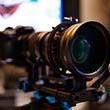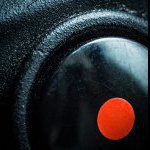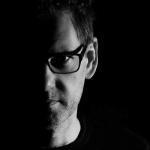Leaderboard
Popular Content
Showing content with the highest reputation on 03/30/2014 in all areas
-

Nice low-light Panasonic GH4 footage
Aussie Ash and 2 others reacted to Musty for a topic
Get one! :) The guy that shot the footage said it was ungraded so with some half decent grading or running it through FilmConvert, you can pull out a less video looking image. That is just for starters! You can also tweek the shadow and highlight curves in camera. I do shoot ML RAW, but as I said in another post, the image is truly amazing but it is still only a hack and you can't rely on it when doing any paid jobs. Plus it eats up so much card space and the post-production process is still a pretty long effort. If I could afford to keep both the 5D MKIII and a GH4 I would, but its not an option. I'm quite happy to sacrifice that lovely RAW image for something that still looks pretty amazing and is 100% stable and easier to work with in post.3 points -

Nice low-light Panasonic GH4 footage
Andrew Reid and one other reacted to Musty for a topic
Some of the best looking GH4 footage I've seen yet... Seems to be fairly clean in low light with a 'filmic' grain to the footage in parts. Its worth downloading the 4K file too.2 points -
I'd like to argue with you, but I have a BMPCC and every time I press the record button I mentally calculate how fat I'll get eating M&Ms waiting for the files to copy over and process :)2 points
-

Some time with the SLR Magic Anamorphot 1.33x - 50
Zmu2 reacted to Sean Cunningham for a topic
Here's my first compilation of test footage with the SLR Magic Anamorphot. Even before the lens arrived I knew this would be an upgrade in both performance and functionality coming from the Century Optics 16:9 adapter I'd been using for over a year now but I was anxious to see just how much. My favorite lens pairing on the Century Optics was my Nikkor 24mm f/2 which, on the GH2, became pleasantly wide instead of feeling more like a normal focal length. Some folks hate the distortion you get from non-rectilinear lenses once you start getting this short but I love it. It's a subtle curve that doesn't feel fisheye at all and the anamorphic glass + scope framing just accentuates this quality. Paired with the GH2 both adapters can go a bit wider, to about 18mm-20mm depending on the lens design, but this Nikkor is the widest prime I currently own. On the Century Optics if I needed infinity focus I also got soft, chromatic edges regardless of stop with the Nikkor. This isn't always an unattractive quality and more than once I've read reputable DPs giggle over their choice to shoot on some vintage set of anamorphics *because of* their soft, soft-edged, chromatic character. One man's lens with character is another man's junk lens. Anyway, if I didn't need infinity focus then slapping on my Tokina +.4 achromat provided good, sharpenened up footage mostly free of chromatic effects. The SLR Magic Anamorphot, on the other hand, doesn't need any extra help. It's sharper at f/2.8 on my Nikkor 24mm than the Century Optics at this stop with or without the Tokina doublet, doesn't go soft at the edges and doesn't go all chromatic either. Where I really felt the limits of the Century Optics adapter was anything above 24mm. For straight 16:9 shooting I loved the look of my F.Zuiko 50mm f/1.8 even though it's a bit soft and exhibits coma wide open because most of its faults are hidden from the GH2. To get soft but still *maybe* useful footage with the 50mm on the Century Optics I'd have to be at f/4 though I really needed to be more like f/5.6 which is decidedly not "bokehlicious". Stacking diopters let me open it up but with a serious restriction on range. With the SLR Magic Anamorphot I could happily shoot at f/2.8 on the 50mm thanks to its close-focus system which behaves like a built-in variable diopter. Speaking of, SLR Magic decided to also produce a new line of high quality achromats as a set (+1.3 and +.33). Where diopters are an absolute necessity with the Century Optics and LA 7200 adapters they're totally optional on the SLR Magic Anamorphot. They become more of an aesthetic choice for further enhancing bokeh in close-up photography, enhancing its stretched quality. SLR Magic rates the Anamorphot as sharp on lenses in the range I shot at as wide as f/2.8 though YMMV depending on the complexity of the lens design. Some lenses have been shown to perform even better than the ratings provided by SLR Magic. For the sake of this test footage I kept generally to the f/2.8 - f/4 range, which I anticipate will be my preferred spread of stops for shooting with the lens though for anything serious this will require a 1st AC to pull focus. A few daylight exteriors are likely shot at f/5.6 but I only went further stopped down, to f/8, on one comparison shot against the Century Optics adapter.1 point -
Some time with the SLR Magic Anamorphot 1.33x - 50
Dave Reeve reacted to tony wilson for a topic
if rocky roads sean cunilingus or whatever his name is is such a slick cinematographic willy his studio tour above shows he was having a bad camera day. bland gear bland tour more slr magic cod salesmanship and cock wars for anyone says a bad thing about made in china bland cheap optics. still waiting for the slr road movie rocky. NOBODY IS GONNA BE MAKING A MOVIE ON THIS CHINA ANAMORPHOT. jokers talking about iscorama and panavision c in the same breath need to have a red nose on and be in a circus rather than in pretend hollywood studio tours in 1 year it will be interesting to see what the resale value will be of letus and slr magic. these optics are clinical and dead owing to the use of single element china glass which is a rip off of recipes from schott zeiss germany and ohara japan. what a crock and what a cock defending a bland optic with the ugliest flare in show biz. and lookin for a fight any chance he can get. even though he has only ever had or used shit anamorphic optics i am rocky and i nose more than you wanna fight blah blah blah1 point -

Some time with the SLR Magic Anamorphot 1.33x - 50
tony wilson reacted to Dave Reeve for a topic
Oh dear... Why are you being so defensive? I have to admit that I haven't worked on any full on hollywood movies, but I started my working life as a PA on films that featured Rutger Hauer, Robin Williams, Sean Connery, Michelle Pfeiffer, RIchard Gere, amongst others (Tactical Assault (they never did come up with a decent title but it's a shit film anyway - but was fun to make!), Jakob the Liar and First Knight). For the most part I was PA to the actors and you really get to know the nuts and bolts doing that. They spent a lot of time waiting; in their trailers (sometimes waiting with the PA girls - no names mentioned!) or on the seats with their names on. A lot of the crew spend a lot of time waiting. Mainly because the film has been budgeted to achieve a certain production level and they can afford to make things look and sound beautiful. That's just how it is. Perhaps the professional productions you work on are different - perhaps TV soaps - they're more about churning material out (but have no use of anamorphic) - which is what you seem to be suggesting..? Anyway, since my early PA experience I've worked on several fiction and doc films - although most of my bread and butter is as an editor. However - I recently shot an edited a feature doc on Thai music that is currently being completed by Technicolor in Thailand (and sadly it seems it's the last film that will pass through their doors...) Anyway I'm not going to waste any more of my time on this thread when you just pathetically lay into people for using the phrase 'each to their own'. It's all horses for courses after all...1 point -
Depends on your end use. BlackMagic is very focused on Cinema Their cameras can deliver RAW 1080 P24 footage. The GH4 seems much more appealing to the masses. I want a camera that can record continuous 1080 P60 footage. I can put the GH3 on a TriPod and record moving (slowly) subjects without any accesories. The improved AutoFocus, ViewFinder, Monitor, and 4k of the GH4 are all bonuses.1 point
-
Thanks for the different perspectives. It is a good idea not to hurry before NAB, but then again there will always be a next exhibition show and if a manufacturer has something so good why not to market it a bit earlier? (well ok, that's for another discussion). Need and want are two very difficult beasts I know, but if we start getting too philosophical about it, which is no a bad thing per se, we'd perhaps arrive to the conclusion that we don't really need anything more than a mini dv camcorder.. ( I am speaking about independent production). To shed some light, I'd like to add that I am working on a new documentary project and while I have finished development and some preproduction, I don't have someone over me to press me to start. I could start shooting in a week or in 5 weeks. Of course, the sooner, the better. This whole "which system to jump into" discussion is only feeding my procrastination demons. The ML raw thing, would be probably be a nice thing to play with on my free time (which I now mostly use in order to decide about my new system), but it looks to troublesome for a new production, in terms of logistics, workflow, possible bugs, etc. The truth is, that other than a good field monitor I don't really need something additional to begin this production. Perhaps I am being to consumeristic, drawn into the flow of technology. But, I am trying to be a realist besides being an idealist. The fact is, and I believe most of you agree on that, that a 5d mkii, as great as it might be for stills, it is a dying dinosaur. The whole debate started in my mind as to not loose the resale dynamic that it now has. I have a dvx100a which I did not sell when it was the proper time and now no one would buy it. I don't want this to happen with my last investment. Perhaps for some of you this is a trivial thing but for me spending 3-4 thousand for a new system is something worth considering very seriously. So besides the ML thing, which otherwise looks great, and staying with my current camera, the question is where to in terms of video. I must admit that I did bite into the "travel light" bullet but it might have been a wrong thing to do and is something I am reconsidering. However many of you have said that the best way is to go double system. And this is what I am considering now. I might just begin this doc with my 5d, which I can keep just for stills until it dies. (i don't need or want more photographic power) and then look into the best image quality- as I understand it- that I can get from a video only or hybrid camera. Thanks again for your input and time.1 point
-

Some time with the SLR Magic Anamorphot 1.33x - 50
tony wilson reacted to Dave Reeve for a topic
I'm sorry but you're wrong. Actors are used to waiting around for ages while shots are set up with stand ins. That's one reason they have trailers and canvas chairs with their names on the back. There's an awful lot of hanging around and waiting on a film set while the various crew members light, practice camera moves and focus pulls etc because it needs to be beautiful. The truth is that most anamorphics wouldn't end up on a professional set. The SLRmagic is one of them as is the bolex. Now as a case of 'each to their own' we're here because we're enthusiasts. We're experimenting With these lenses for the most part as an aside to our bread and butter. That's not to say we won't use them in our work because we probably will in some way. I met someone using the bolex for a doc for example. Its just I'd personally rather spend the time to work with the sumptuous bolex than the SLRMagic which aesthetically leaves me cold. Each to their own.1 point -

Some time with the SLR Magic Anamorphot 1.33x - 50
nahua reacted to Sean Cunningham for a topic
That facial AF stuff fascinates me, that it works at all. Sooner or later they'll get some kind of optical flow or motion vector calculations in there to help it maintain continuity if the subject turns their head briefly, so it doesn't just go searching around.1 point -

Some time with the SLR Magic Anamorphot 1.33x - 50
Sean Cunningham reacted to nahua for a topic
This is my test video with my GH3 + 12-35 X + SLR Magic Anamorphot + Tiffen Vari-ND. Sean is right, mostly used around 20-25mm wide end, and a few 35mm. Everything shot with AF on Face Detect, so you can see it going in and out of focus. Not the best way to use AF, but it was just me doing this. Anamorphot was slightly mis-aligned, but overall AF worked very well. Sorry about my ugly face in all of this. Edit: I did Fast Color Corrector and some Film Convert for WB adjustment and added a little grain.1 point -

Some time with the SLR Magic Anamorphot 1.33x - 50
nahua reacted to Sean Cunningham for a topic
That's not really a "to each their own" case. Discounting what I said in favor of a single aesthetic at the expense of all others on a production says you've never been in that position, working with real actors, or under those kinds of pressures. You have the luxury of having that kind of naive position to take (edit: not being pejorative here). I have to think practically and make choices based on knowing everything is a compromise. So I'd want to be a principle on production that isn't going to constantly be saying "no, we can't do that," or always slowing down setups more than camera department will be blamed for anyway. I'm not going to impose something that will possibly incur more takes because there is now no flexibility with actors hitting marks. Not only would this be wasteful and fatigue inducing it will also potentially lead to animosity between talent and myself, and I don't want that. Not to mention, most narrative work is wider, not longer focal lengths. You've got it backwards. Dynamic movement and flexible blocking trumps preciousness in close-ups for most of the running length of a motion picture. edit: But even considering all that, on something like the GH2 a 50mm is the equivalent to shooting on an ~82mm lens in anamorphic 35mm terms. This adapter allows full fluency of cinematic focal lengths, barring super-telephoto. The key is to find the right taking lens to pair it with. The 24mm corresponds to ~40mm in anamorphic 35mm terms, the lens most of Django Unchained was shot on and, I believe, many of the signature shots in Rushmore.1 point -
1 point
-

New lenses for new system !
nahua reacted to fuzzynormal for a topic
If you want a cinematic look, f2.8 is a good place to be on the M43 cameras.1 point -
Nope. Because... That's good enough a reason, isn't it. Other than that, yes, it probably is a good idea to sell the 5Dm2. As long as the video side of things is concerned, it would make sense to sell the 5mk2 soon, as long as you still might get decent money off it. That won't last for too long now, though. To which system to jump into, if changing to another one in the first place, is another matter. I believe that right now, of all times, before NAB, before Photokina, before a number of anticipated new releases, one may not want to be in a hurry. Unless you really need a new camera. If that's the case, none of this speculation really matter. You need a new camera and you want a new camera - two very different things. It sort of depends, but in general yes. So called full frame glass will work with full frame, APS-C/S35, mFT, 1-inch and S16. It doesn't quite work the other way around. The full frame glass is less likely to go obsolete, for that reason. Even though you can get along without it, too. Other than that, it's a matter of taste and your personal preferences. What you like, what you're willing to carry around and so on. So whatever fancies you but please... Please, it's 2014, stop propagating the silly idea that mirrorless equals micro four thirds. That is simply not the case, and the smaller size of the gear is just one part of the whole point in going for mirrorless systems. There are several other reasons as well. On the video side, more than on the stills side, the mirrorless system has obvious benefits over the traditional dSLR design, regardless of the sensor size. Even Canon have been moving towards mirrorless systems within the higher end video segment, hence the C-series. There are already mirrorless systems from S16 to full frame, so the shallow depth of field vs. mirrorless is a moot point. The Sony A7r, whilst perhaps not the best candidate for video, is just the first full frame mirrorless body. More are on the way quite soon, and probably not only from Sony. Same goes for APS-C size, they're getting better, too. There are three trade shows coming within the next six months, and I bet that until March 2015, the palette available for us is even wider. With compelling options in several different sensor sizes. So not much point in digging oneself into outdated trenches. FWIW, I for one have come to the conclusion that if you want to have the best of the both worlds, stills and video, buy two different cameras. A hybrid to do both will always be a compromise. At least within a reasonable budget. So all in all, I'd say if you fancy the GH4 just go for it, but if you're not in a hurry, well, then don't be. Your desires, your wallet, your decision.1 point
-

ML Raw vs. GH4 etc.
Ronaldpr reacted to QuickHitRecord for a topic
I also have a 5Diii running ML. I'm not going to buy the GH4 because I don't need 4K, and with my 5D I'm getting a full-frame sensor and a better codec without the added bulk and cost of an external recorder. Plus, I get NIGHTLY firmware updates from Magic Lantern. I just downloaded last night's and it's hard to believe all the bells and whistles that have been added in just the past week. In terms of shooting with raw, I use it for the option of matching white balance between shots and tweaking exposure. Then I export them out to 12-bit ProRes 4444 files, and edit and grade as usual. I don't bother with the KomputerBay cards. To me, the piece of mind that I get from the Lexar 1000x cards is worth the extra cost. If you are really keen on 4K, then maybe the GH4 is the camera for you. But otherwise, the 5Diii delivers some of the best 1080P I've seen, and you already own one!1 point


